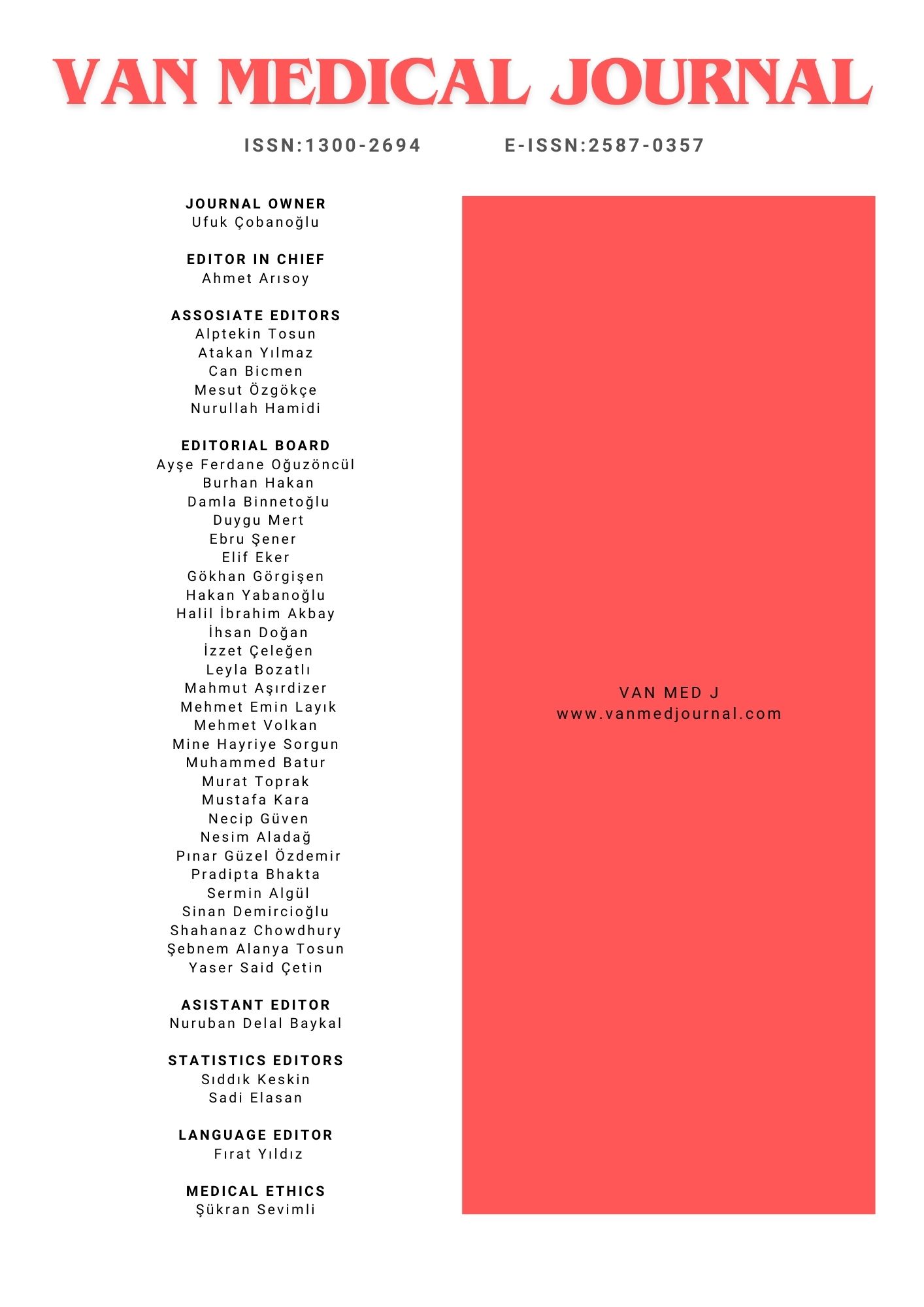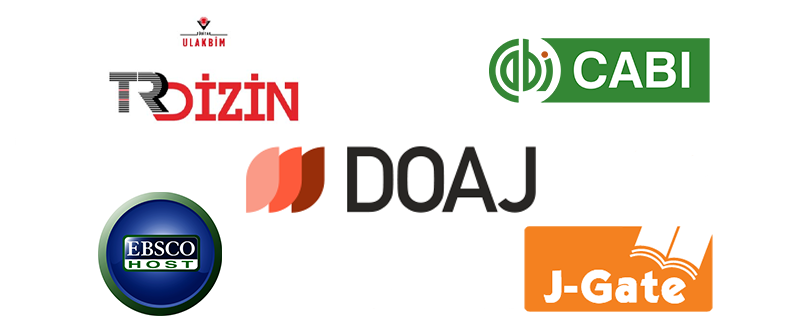The peer-review process is a critical step in assessing the scientific value and suitability of a study for publication in Van Medical Journal. Here are some guidelines for conducting a peer review:
- Be Courteous, Honest, Professional, and Constructive: Approach the review process with professionalism and a constructive attitude. Be honest in your evaluation and feedback but maintain a respectful and courteous tone.
- Pre-Review by Editors: Acknowledge that each manuscript has been pre-reviewed by the editors, and your review helps in further evaluation.
- Read the Text: Before beginning your review, read the entire manuscript at least once to understand its context and content.
- Check Current and Relevant Resources: Ensure that the references and sources cited are current and relevant. You may randomly check a few sources to verify their accuracy.
- Evaluate Statistical Analysis: Pay close attention to the statistical analysis presented in the manuscript. Comment on the appropriateness of the statistical methods used and their interpretation.
- Avoid Long Paragraphs: Provide feedback in a structured manner, avoiding long paragraphs. Use headings or bullet points to break down your review into specific sections.
- Keep an Open Mind: Do not make a decision about the manuscript before completing your review.
- Evaluate the article based on its scientific merits and relevance.
- Avoid Personal Comments: Do not make personal comments about the authors, their qualifications, or their ability to conduct the research. Focus your feedback on the content and methodology of the study.
- Minor Grammatical Errors: Do not dwell on minor grammatical errors. These can be addressed during the proofreading process.
- Review Each Section Individually: Evaluate each section of the manuscript individually, providing specific feedback for each. Below, you will find guidance on how to assess each section.
Article Sections
When reviewing the various sections of the article, consider the following points:
Title: Check if the title accurately reflects the content of the article. Ensure the title is concise and does not contain off-topic information or the study's methodology. Confirm that the title does not reveal the study's results.
Abstract: Evaluate whether the abstract provides an informative summary of the article.
Assess if the summary is clear and concise, enabling readers to understand the study's main findings.
- Introduction: Verify if the introduction section explains the rationale for the study and the hypothesis being tested.Examine if the background information is sufficient to introduce the research topic. Confirm that specific study objectives or hypotheses are clearly stated. Assess the clarity and precision of the text.
- Materials and Methods: Ensure that the methods are clearly defined, allowing for replication of the study. Check for transparency and completeness in describing the study's materials and methods.
- Results: Evaluate if all relevant results have been included in the results section. Assess if primary and secondary results are presented clearly.
- Conclusions: Examine whether the conclusions are supported by the data presented in the article. Verify that the conclusions logically follow from the results.
- Consistency Between Abstract and Main Text:Check for consistency between the information presented in the abstract and the main text of the article.
When reviewing each section, focus on providing specific feedback to the authors. Address any strengths or weaknesses in the content, clarity, and relevance of the text. Your feedback should help the authors improve the quality of their article and its contribution to the field of medical science.
Introduction:
A strong introduction should provide enough background information to contextualize the research topic for the reader. It should explain why the study is necessary and provide some context about the subject matter. It should briefly summarize the current state of knowledge on the topic and refer to relevant studies. The level of background information required can vary depending on the complexity of the topic, but generally, the introduction should strike a balance between providing enough context and not overwhelming the reader with excessive detail.
The introduction should also clearly outline the specific objectives or hypotheses of the study. These objectives or hypotheses should be well-defined and specific. They should give the reader a clear understanding of what the study aims to achieve or what it seeks to test. If there are multiple research questions, they should be listed in a way that is organized and easy to follow.
Clarity and precision are essential in scientific writing. The text should be clear and concise, avoiding unnecessary jargon or ambiguity. It should be well-structured and logically organized, making it easy for the reader to follow the argument and understand the purpose of the study.
In summary, a good introduction should provide sufficient background information, clearly state the study's objectives or hypotheses, and present the information in a clear and precise manner.
Materials and Methods: When reviewing the "Materials and Methods" section of a research article, consider the following key points:
- General Considerations: Assess whether this section provides sufficient detail for readers to understand the research methodology and for other researchers to replicate the study.
- Verify if subjects were clearly identified or recruited, and if inclusion/exclusion criteria were specified.
- Confirm that the patient population studied is well-defined.
- Look for an Institutional Review Board (IRB)/Ethics Committee statement and check if it complies with ethical standards.
- Check if data collection methods and instruments are described.
For Randomized Controlled Trials:
- Ensure that the method of randomization is explained.
- Check for information on blinding and how the blinding was maintained.
- Verify the method used for screening subjects.
For Comparative Studies:
- Confirm that equipment used (make and model) is clearly mentioned.
- Check if the number of measurements is specified.
- Assess whether the study's procedures are well-documented.
For Surveys:
- Look for a description of how the survey was developed and validated.
- Assess the procedures used to test or modify the survey.
Data Collection and Analysis:
- Evaluate whether there are clear and valid explanations of how measured and calculated values were obtained.
- Check for the inclusion of a flowchart that describes the screening process, reasons for excluding individuals, and allocation of subjects to different treatment groups.
- Assess if the measurement procedures align with the study's aims or hypotheses.
- Verify if there is enough detail in this section to critique the validity of the study and for potential replication.
Statistical Methods:
- Ensure that the appropriate statistical methods were used for the study design.
- Check if the statistical methods are clearly explained and justified.
Clarity and Precision: Examine whether the text in this section is clear and precise, making it understandable to readers.
Your feedback in this section should help authors ensure the transparency and reproducibility of their research, as well as the validity of their findings. Provide specific comments on the strengths and weaknesses of this part of the article.
Results: When reviewing the "Results" section of a research article, consider the following key points:
Data Presentation:
- Ensure that this section includes the findings of the study, including the results of the statistical analysis.
- Confirm that primary and secondary results are presented, but interpretations of the data are avoided.
- Assess whether each variable described in the "Materials and Methods" section has complete data.
Clarity and Relevance:
- Verify that data is clearly presented and not irrelevant to the aims or hypotheses of the study.
- Evaluate whether tables and figures are clear, relevant to the research, and appropriately used to present data.
- Check if the text avoids presenting the same data that is also included in tables or figures.
Order and Flow:
- Assess whether the presentation flows well, with primary analyses presented before secondary or post-hoc analyses.
- Check if summary data and p-values are properly rounded and reported.
- Ensure that the text is clear and precise.
Your feedback in this section should focus on the clarity of data presentation, adherence to the study's aims and hypotheses, and the appropriate use of tables and figures to complement the text. Provide specific comments on the strengths and weaknesses of the "Results" section, helping authors improve the clarity and relevance of their findings.
Discussion: When reviewing the "Discussion" section of a research article, consider the following key points:
Summary of Findings:
- Verify that the first paragraph provides a clear and concise summary of the main findings of the study.
- Assess whether the interpretation of the results aligns with the problem statement or hypotheses of the study.
Discussion of Results:
- Evaluate whether the authors discuss both the theoretical and practical implications of the results.
- Consider whether you agree with the interpretation of the results based on the presented data and supporting evidence.
Integration with Previous Literature:
- Check if the authors compare the findings of this study with previously published studies.
- Assess whether the references used in the discussion are sufficient and relevant to support the arguments made.
Limitations:
- Confirm that the limitations of the study are clearly stated in a separate paragraph, acknowledging any constraints or weaknesses in the research.
Emphasis and Clarity:
- Evaluate whether the authors avoid overstating the importance of their work and maintain an objective tone.
- Ensure that the text in this section is clear and precise, making the discussion of results accessible to the reader.
Your feedback should focus on the quality of the interpretation of results, integration with existing literature, transparency regarding study limitations, and the clarity and relevance of the "Discussion" section. Provide constructive comments to help authors improve this part of their article.
Conclusion(s): When reviewing the "Conclusion(s)" section of a research article, consider the following key points:
Clarity and Content:
- Check whether the authors have clearly stated the conclusions drawn from the study.
- Ensure that methods and findings (data) are not presented in this section, as it is reserved for summarizing the main takeaways.
Lesson and Recommendations:
- Evaluate whether the lesson to be learned from the study is clear and well-articulated.
- Verify if the text in this section is clear and precise.
References:
- Assess if the references used in the article are up-to-date and relevant to the study question, methods, results, and discussion.
Tables and Figures:
- Confirm that tables and figures are used to clarify and illustrate results, not to repeat data provided in the text.
- Check if they are simple, clear, and descriptive, with summary data and p-values rounded appropriately.
In your review, provide constructive feedback on the clarity and content of the "Conclusion(s)" section. Consider whether the conclusions align with the study's objectives and whether they are supported by the data. Ensure that you evaluate the overall quality of the article, including the adherence to the guidelines and the relevance of references.
After assessing all sections of the article, you can make your recommendation, which can fall into one of the following categories:
- Accept: The article has no significant issues and is ready for publication. However, it's unusual to suggest acceptance without a review on the first submission.
- Minor Revision: The article has a few minor issues but is largely editable. Authors can address these minor concerns to improve the article.
- Major Revision: The paper has some major issues, but it could be acceptable if the authors can adequately address the concerns of the reviewers. You should specify the major issues that need attention.
- Reject: The article has significant methodological flaws, ethical concerns, or lacks originality, and it does not contribute to the body of knowledge. Rejection indicates that the article cannot be made acceptable through revision.







